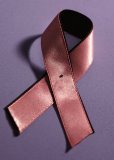According to the National Cancer Institute website, this is an uncommon type of breast cancer, but one that can spread very rapidly. MayoClinic.com reports changes that occur with Inflammatory Breast Ccancer can become apparent in a matter of days to weeks. Unlike other types of breast cancer, you probably won't develop a distinct lump. Instead, you might notice an area of thickness or a feeling of heaviness in one of your breasts. Inflammatory breast cancer tends to develop as a sheet rather than a lump or tumor. Which means it's not usually detected by monthly breast exams.
Diagnosing inflammatory breast cancer can prove difficult. Often no lump can be felt, and the area of concern may not show up on a mammogram. Additionally, the signs and symptoms can be easily mistaken for a breast infection (mastitis). In order to confirm that a woman has inflammatory breast cancer a biopsy will need to be taken.
Signs and Symptoms Include:
- A breast that appears red, purple, pink or bruised
- A tender, firm and enlarged breast
- A warm feeling in the breast
- Itching of the breast
- Pain
- Ridged or dimpled skin texture, similar to an orange peel
- Thickened areas of skin
- Enlarged lymph nodes under the arm, above the collarbone or below the collarbone
- Flattening or retraction of the nipple
- Swollen or crusted skin on the nipple
- Change in color of the skin around the nipple (areola)
(Source: The National Cancer Institute and Mayo Clinic)
For more information visit:
Inflammatory Breast Cancer Association
To view the News Story from KOMO News:
The Silent Killer:Inflammatory Breast Cancer




<< Home